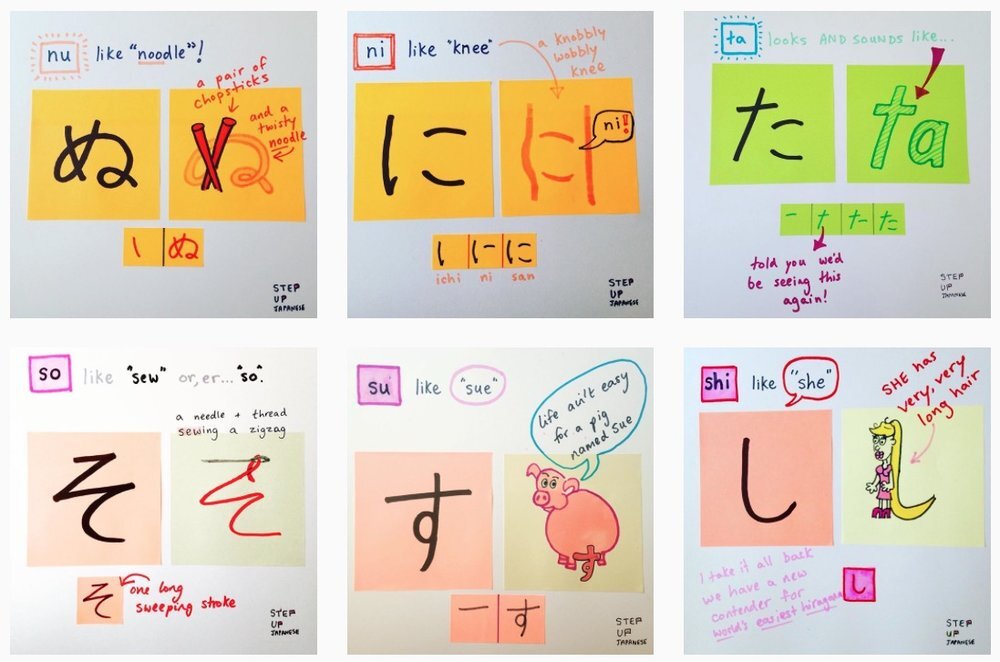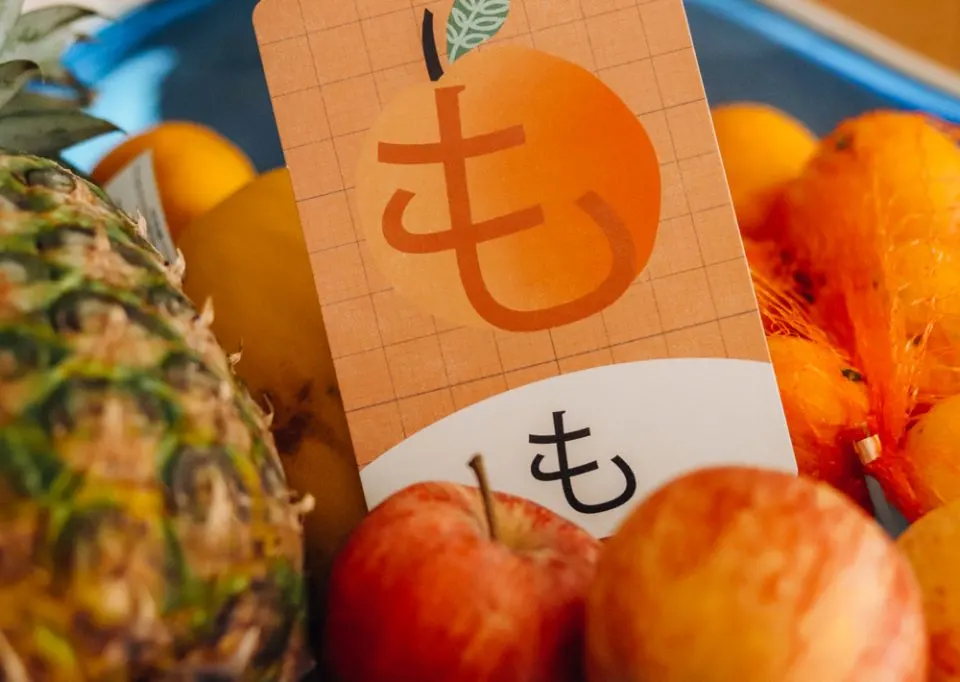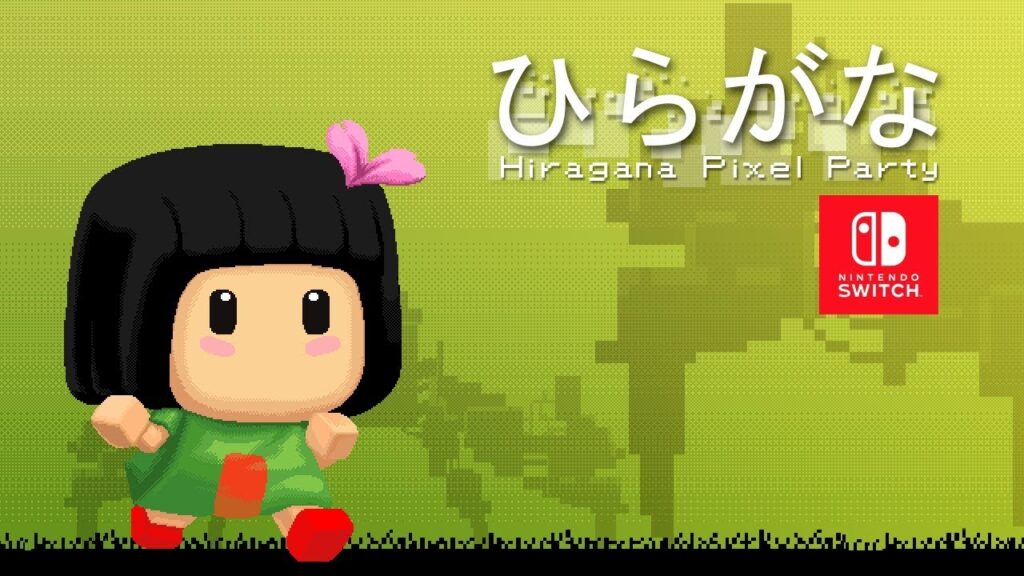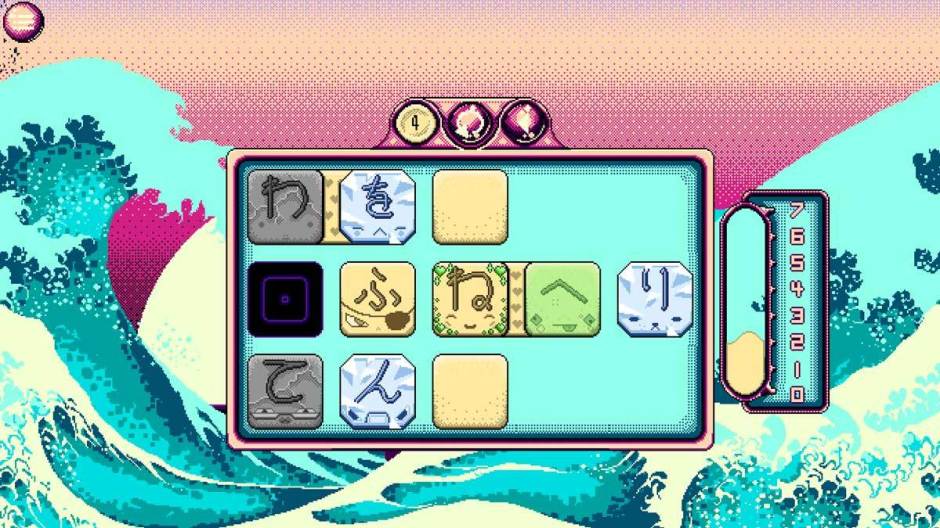Learning Hiragana and Katakana, Japan’s two phonetic alphabets, is the first step to learning to read and write Japanese. When most people think of studying Japanese, they think of studying kanji, but Hiragana and Katakana are just as important. The Japanese writing system has three writing systems: Hiragana, Katakana, and kanji. Beginners often focus on kanji because it’s more interesting—and more difficult—than Hiragana and katakana.
As a result, it’s common for students to learn Hiragana and katakana too slowly or not at all. This can hinder their progress in reading and writing Japanese. But it doesn’t have to be that way. There are many ways to learn the alphabets quickly and effectively so you can move on to more advanced study of the language. Here are 11 ways to learn hiragana and katakana fast.
What is the difference between Hiragana and Katakana and how to start?

Before we get into how to learn hiragana and katakana successfully, you first know what the hiragana and katakana alphabets are. The Japanese written language was derived from Chinese.
The intricate number of Chinese characters — each one representing a separate word — are also employed in Japan, but the grammatical rules of Japan do not allow for reliance solely on kanji symbols. As a result, hiragana and katakana are employed in conjunction with kanji to form entire phrases.
What exactly is Katakana?
Simply defined, katakana is used when writing a term taken from another language (typically English), such as takushi for taxi or hotteru for hotel.
They’re also utilized for sound effects in manga. And you’ll see them as a stylistic option on movie posters, neon signs (like karaoke bars), and other locations.
What exactly is Hiragana?
Hiragana is more adaptable. It is combined with kanji to make entire words or to distinguish verb forms. When writing in Japanese, it is also utilized as ‘particles’ in sentences.
The beauty of studying hiragana is that you can get by with just knowing this one alphabet because hiragana can be used to write anything in Japanese.
One of the finest reasons to learn hiragana is to be able to read station names on the train, as they are always written in kanji and hiragana in case you don’t know the kanji for that station.
Learn the Sounds of Japanese
Before you can learn the symbols that represent the sounds, you have to know what sounds they represent. And the good news is that Hiragana and katakana are fairly simple. There are only five vowel sounds in Japanese, and each vowel is represented by a single character: a, i, u, e, and o.
Each vowel also has a long form. To make a long vowel sound, add the character for “tsu” to the end of the vowel. For example, “i” becomes “ii,” “e” becomes “ee,” and so on.
There are also five consonants in Japanese: k, s, t, h, and m. Each one is represented by a single character. For example, “k” is represented by the character “ka.” The sounds of hiragana and katakana are easy to learn because they don’t differ significantly from English.
Learn the Rōmaji Way
If you’re completely new to Japanese and want to learn Hiragana and Katakana, don’t! Learning rōmaji is the first step. Rōmaji is the Latin alphabet transliterated into Japanese. For example, the word for Japan is “Nihon” in Japanese, but it’s written “Nippon” in rōmaji.
Rōmaji is usually used to write words borrowed from other languages such as English or Chinese. Since it’s not a writing system used in its own right, you’ll need to learn Hiragana and Katakana before you can fully read and write in Japanese.
But there is one way you can learn the alphabets without learning rōmaji first. The Hiragana and Katakana alphabets are based on the shapes of the letters in rōmaji. The most common rōmaji letters are used to represent each hiragana or katakana character when writing them out phonetically. For example, the letter “a” represents あ (a), just as it does in English. So if you know all of the rōmaji letters, you already know a good chunk of Hiragana and Katakana!
11 Innovative and Effective Methods for Learning Hiragana and Katakana
It is critical to learn hiragana and katakana early in your Japanese studies. It will give you an excellent start on the Japanese language ladder, and if kanji prove too difficult, studying hiragana and katakana will serve you well for a long time.
So, with the rules and details out of the way, here are some of the greatest, most effective techniques to rapidly and confidently learn hiragana and katakana.
Hai! Flash Cards in Hiragana and Katakana

This is by far the quickest and most effective approach to learn hiragana and katakana in a clear and confident manner. Hai! is a small company founded by a couple who met while studying Japanese and are now situated in Tokyo.
As seasoned students, they tackled the creation of these mnemonic flashcards with care and elegance. Charlotte, the artist, also creates beautiful prints, which you can view on her website.
Hai! Hello, Hiragana and Hai! Katakana is a set of two cards, each with a cute and colorful piece of artwork that helps the learner memorize a single hiragana or katakana character.
This is an excellent tool for visual learners since it combines the sound and sight of each character with an example of a Japanese phrase that begins with that character/letter.
The very first card in Hai! Hiragana, for example, is /A. To recall the character, there is a hand-drawn illustration of a stormy rain cloud that mimics the character at the bottom.
The Japanese phrase Ame/, which means rain, is written on the back. So here’s your mental connection: Ame/ = A = = rain cloud The method is addictive, and each card is so brightly and imaginatively made that the process is quick and simple.
You can master one of these two alphabets in a single afternoon if you use this mnemonic flash card approach to study hiragana and katakana. Then, keep checking back, practicing writing them, covering up the cards, and sounding out the characters until you’re confident.
This should take two or three days more. Then proceed to the next deck of cards. You’ll have learned both hiragana and katakana within a week.
The tactile tangible nature of our flashcard packs makes learning more engaging and exciting, especially when done with a companion or partner. Encourage someone to learn alongside you to increase the fun.
If you prefer DIY flashcards, just do it. Write one hiragana character on one side of the card, and its pronunciation on the other. Flip the card over and try to recall both. You can make your own flashcards or download them from sites like AnkiWeb or Quizlet.
If you’re a visual learner, this method might be a good fit for you. It’s also good if you want to learn the characters quickly, because you can review the cards frequently.
Flash Cards Anki (App)
If you don’t want to buy a pack of Hai! Hiragana/Katakana Flash Cards, you should make your own flashcards to assist you learn hiragana and katakana. And Anki is a smartphone software that allows you to create an infinite number of flash cards of your own design without purchasing or wasting paper or card.
If you prefer to control your own learning, you can use Anki to create your own flashcards by installing a Japanese keyboard on your phone and stamping a single hiragana character on one side of a digital flashcard.
On the flipside is the English equivalent, as well as a useful illustration of how to utilize that character.
When you’ve finished studying hiragana and katakana, Anki can be utilized in exactly the same way when you’re ready to tackle kanji characters.
Simply stamp the kanji on one side and type down the English term and hiragana spelling on the back, along with a full sentence as an example for context.
Hiragana and Katakana of Dr. Moku (App)
Using paper flashcards is one way to practice hiragana and katakana, but if you want a more engaging way to study, why not use a language-learning app? There are several apps that allow you to learn hiragana and katakana through various activities. For example, Hiragana Pixel Party offers a fun way to test your knowledge of each character with a puzzle game. But if you want a more comprehensive program, try Learn Japanese Hiragana by Gakuu Labs (available for Android only). The app lets you learn all 46 basic hiragana characters alongside other essential vocabulary such as numbers, colors, and months of the year.
Dr. Moku’s Hiragana & Katakana are two iOS and Android mobile apps (they each come separately or you can buy them as a bundle). They function exactly like Hai! Hiragana/Katakana Flash Cards, only they’re on your phone.
Dr. Moku has assigned an image to each character in the hiragana and katakana alphabets to help you remember the sound and appearance of that character.
This is an affordable and effective way to learn hiragana and katakana rapidly, and because it’s an app, you can access it whenever and wherever you want.
However, it is not as adaptable as the Hai! Flash Cards. Because you’re using your hands more, having physical, tangible cards keeps your brain engaged for longer, plus the art for the Hai! The quality of Flash Cards is higher.
Dr. Moku’s Hiragana & Katakana, on the other hand, provide a less expensive and more portable option for the busy Japanese language learner.
Play Games to Learn Hiragana and Katakana
Katakana and Hiragana are not hard to learn, but they can be hard to remember. You will have a much easier time remembering the alphabets if you actively review them frequently.
One of the best ways to review is to translate words you know into Hiragana and Katakana. For example, if you’re watching an anime and see a character name, translate it into Japanese. Or check out restaurants when you travel and look at menus written in Japanese. Even reading signs while walking down the street will help you learn the alphabets.
When you read something in Japanese that is written entirely in Hiragana or Katakana, it will help your brain review the letterforms more easily.
Another great way to learn the alphabets is by playing games that teach them to you. There are several apps and websites that let you type in words in Hiragana or Katakana for points, helping you learn the alphabets as you play. For example, Hiragana Battle and Kanji Pop are fun ways to learn hiragana and katakana, respectively.
Don’t forget Japan also homes to video games. So learning through games is a true exciting option:
Pixel Hiragana Party (Video Game)

Hiragana Pixel Party is a must-play game for Nintendo Switch owners who want to learn hiragana.
This is a rhythm-based infinite runner platformer in which your character runs from left to right and you utilize button prompts to help them jump over obstacles.
The barriers are labeled with hiragana characters, and you must press the proper button to successfully assist them in moving forward.
The game gradually teaches the characters by playing their matching sound and displaying it in Roman characters (for example, = ka or = su). Then you have some time to memorize this before applying what you’ve learnt ingame to keep your character alive.
Hiragana Pixel Quest adds just enough tension to motivate players to keep their minds fully engaged and employ reactionary button presses while they memorize each hiragana character one at a time.
The game is also reasonably priced, has a distinct pixel visual style, and includes catchy chiptune sounds to help you memorize hiragana.
Kana’s Quest (Video Game)

Kana Quest is a stunning new indie video game that is presently available on Steam for PC. It’s a sliding tile puzzle game that, in the words of the makers, is “a cross between dominoes and match-3.”
While the game is intended to educate players both hiragana and katakana, it is also an entertaining puzzle game in its own right, blending some absolutely outstanding chiptune songs with lovely pixel art backgrounds that depict Japanese culture.
Seriously, this is a stunning game with charming animations and addictive gameplay.
Of course, the main goal of Kana Quest is for you to learn hiragana and katakana, which it accomplishes by encouraging you to memorize the characters from both alphabets, one for each tile.
Successfully memorizing each new character is the key to completing each of the more than 300 levels. You will have mastered both the hiragana and katakana alphabets and had fun along the way by the end of this game, without even realizing it.
Wall Art in Hiragana and Katakana
Learning and beautifying your home can coexist. Geri Draws Japan’s gorgeous A3 riso prints allow you to practice while walking past or getting out of bed. These are ideal for anyone who is already studying hiragana and katakana, or if you simply want something lovely to look at.
Learn Hiragana and Katakana Together
In Japanese, Hiragana and Katakana are used for different purposes. Hiragana is used for things like verb endings and particles, while Katakana is used for foreign words and names. So if you’re learning both, it’s best to learn them at the same time to get a feel for how they’re used in the language.
Learning them together will also make the task easier in general. It’s easier to remember something when you don’t have to make an extra effort to memorize it—and this is especially true of foreign languages. When you’re learning Hiragana and Katakana at the same time, your brain won’t have to make an extra effort to memorize one alphabet while it focuses on another.
And if you’re learning only one alphabet, it’s best to learn it along with the other alphabet because most books that teach hiragana or katakana tend to group them together anyway. So if you want to skip a step, just use a book that teaches both alphabets together.
Make a Mnemonic Story
Hiragana and katakana can be tricky because they each have 46 characters—more than any other alphabet in the world. The sheer number of characters means it’s difficult to remember them all, especially if you’re just starting out with your study of the language.
To make things easier, you can create mnemonic stories for each set of characters. A mnemonic story is a story that helps you remember something. For example, if you have to remember the order of planets in our solar system, you could tell yourself a story about a student named Jupiter who wakes up late for school and forgets to bring his lunch, so he has to eat Mars’s sandwiches.
Mnemonic stories can help you visualize each character so you don’t forget them. However, this technique works best when you create your own story—don’t rely on someone else’s story, as it might not work well for you. You need a story that makes sense to you and that you will remember easily. You also need to use your own words—just using someone else’s words won’t help much.
Making mnemonic stories isn’t easy—it takes time and effort—but it’s one of the most effective ways to learn hiragana and katakana fast so that you can move on to reading and writing Japanese quickly.
Learn Hiragana Through Songs
Sometimes the best way to learn something is to make it fun. There are several websites that have created catchy songs with lyrics in Hiragana and Katakana to help you memorize them.
Hiragana.net has a listing of hiragana songs, and there are also a few on the Learn Japanese Pod website.
The song “Kana-chan” teaches both Hiragana and Katakana and is easy to follow along with. Other songs on the site are designed for kids, so they’re a little more whimsical, so if you’re looking for something that’s not too serious and can be fun, this is a good site to check out.
The Learn Japanese Pod song “Aiueo” is a little easier to follow along with and has more of a pop music vibe. This song also includes old-style katakana in addition to hiragana, which can help you memorize both alphabets at once. The lyrics are simple enough that beginners can follow along, but they’re catchy enough that intermediate students might enjoy them too.
If you want something a little faster or more intense, check out this video on YouTube by user Misa Suzuhara:
Create your own mnemonic devices.
We’ve covered two mnemonic ways for learning hiragana and katakana — Hai! and Dr. Moku’s Hiragana & Katakana — but many individuals prefer to construct their own mnemonics because they may not see what the creator wants them to see in the pre-made flashcards.
The benefit of creating your own mnemonics is that you have complete control over your study. Simply look at each hiragana and katakana character and decide how they appear to you, then write it out on paper or a flash card; whichever helps you remember the sound of that character.
Study by repetition
This is the most boring way to learn hiragana and katakana. It is, nonetheless, the finest option for certain folks. Our minds are all unique, and we all approach learning in unique ways.
If memorizing the characters and their sounds is the most convenient method for you, then do so.
The ideal way to practice this rote method is to have your selected character in front of you – either on paper or on a screen – and then type it out ten or more times, sounding it out loud each time.
Side note: Learn the Consonant “Y”
Hiragana あああいうえお and Katakana アアアイウエオ are called “yōon” (four vowel) kana. They are unique in that they contain a consonant: the “y” sound.
Hiragana あああいうえお and Katakana アアアイウエオ are called “yōon” (four vowel) kana. They are unique in that they contain a consonant: the “y” sound.
While this is an important distinction, it is also often overlooked by students. The four vowel kana actually have a lot of similarities with the consonant-less hiragana and katakana. Because of this, it’s actually easier to learn the consonant yōon kana first and then learn the hiragana and katakana that don’t have consonants later on.
There are many ways to practice yōon kana: flashcards, mnemonic devices, or simple repetition will all work to solidify their usage in your brain.
These three methods of learning Hiragana and Katakana overlap with other methods, but each is distinct enough to be considered its own solution for learning the Japanese alphabets quickly. Depending on your learning style and how much time you have, you can use one or more of these methods to learn the alphabets more effectively so you can move on to more advanced study of Japanese.
Final thoughts
Overall, learning hiragana and katakana can be a challenging but rewarding endeavor. With the right resources and strategies, anyone can become proficient in both writing systems. With the 8 most effective ways to learn hiragana and katakana detailed in this article, you should now have a better understanding of how to learn these two writing systems.
Start by having fun with the basics, then move on to the more complex aspects when you are comfortable. Regular practice and review will lead to mastery, as you begin to recognize and be able to write each character with ease. By following these 8 most effective ways to learn hiragana and katakana, you will soon be able to fluently read and write in Japanese!